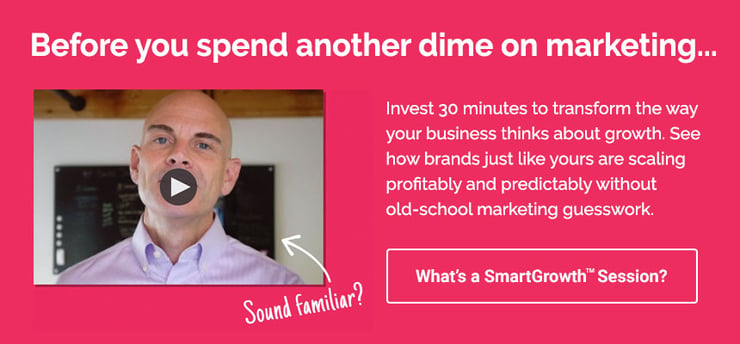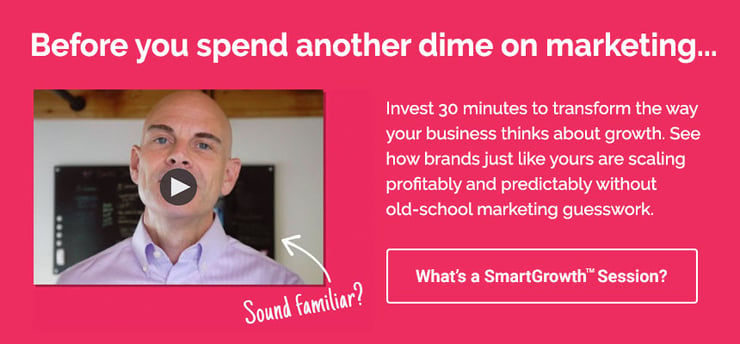You've spent weeks crafting the perfect buyer personas. You've named them, given them a job title, and even picked out their favorite coffee order. But when it comes time to connect with your actual B2B audience, something feels... off. Sound familiar?
Here's a secret many marketers won't tell you: understanding your ideal customers goes far beyond creating fictional characters. After all, these carefully crafted personas could work just as well for all of your competitors.
The real magic happens when you tap into the genuine challenges, aspirations, and day-to-day realities of the people behind the businesses you serve. In this article, we'll explore how to move past surface-level personas and forge authentic connections with your B2B audience. Ready to transform your B2B marketing from "meh" to memorable? Let's dive in.
7 Steps to Understanding Your B2B Audience
1. The Limitations of Traditional Personas
We've all been there. You're sitting in a marketing meeting, and someone proudly unveils "Marketing Mike" - a 45-year-old CMO who loves golf and craft beer. But here's the kicker: your actual B2B audience is as diverse as a box of assorted chocolates, and far more complex than a one-dimensional character sketch.
Traditional personas often fall short in B2B marketing because they oversimplify the nuanced decision-making processes in business environments. They can lead to dangerous stereotyping, like assuming all IT managers are introverted tech geeks or that every CEO is a hard-charging type-A personality.
Consider the case of a software company that created personas based solely on job titles. They completely missed the fact that their most successful customers were actually the quiet innovators within larger organizations - people who didn't fit neatly into their preconceived notions. By relying too heavily on these surface-level personas, they were blind to a significant market opportunity.
The truth is, your B2B audience is made up of real people with multifaceted lives, complex motivations, and ever-changing priorities. Trying to stuff them into a persona-shaped box is like trying to fit a square peg in a round hole - it just doesn't work.
2. Empathy: The Key to Connecting with Your B2B Audience
Now, let's talk about the secret sauce of B2B marketing: empathy. No, I don't mean sending a "We feel your pain" email blast. I'm talking about genuinely understanding the challenges your audience faces every day.
Imagine you're selling project management software. Instead of focusing on features, dig into the real struggles your B2B audience experiences. Are they losing sleep over missed deadlines? Drowning in a sea of unproductive meetings? These are the pain points that keep your audience up at night, and addressing them is how you'll win their hearts (and their business).
Active listening is crucial here. It means asking probing questions during sales calls, carefully analyzing customer feedback, and yes, maybe even grabbing a coffee with a client without trying to sell them something. Shocking, I know.
To cultivate empathy in your marketing team, consider implementing "A Day in the Life" exercises. Have team members shadow customers or role-play typical scenarios your B2B audience faces. It's amazing how much insight you can gain when you walk a mile in your customer's shoes (even if they're metaphorical).
3. Digging Deeper: Uncovering Your B2B Audience's True Pain Points
Now that we're thinking empathetically, it's time to roll up our sleeves and do some detective work. Uncovering your B2B audience's true pain points requires a mix of art and science.
Start with customer interviews, but don't just stick to a script. Let the conversation flow naturally and be prepared to follow unexpected threads. You might discover that what you thought was your audience's biggest problem is actually just a symptom of a much larger issue.
For example, a company selling HR software thought their B2B audience's main pain point was streamlining the hiring process. But through in-depth interviews, they discovered the real challenge was retaining top talent in a competitive market. This insight completely transformed their product development and brand messaging strategy.
Don't forget the power of data analytics. Look for patterns in customer behavior, support tickets, and engagement metrics. Are there common features that your most successful customers use? Do certain types of content consistently resonate with your B2B audience?
Social listening can also provide valuable insights. Monitor industry forums, LinkedIn discussions, and X threads. What topics keep coming up? What frustrations are people venting about? These unfiltered conversations can be goldmines of information about your B2B audience's true concerns.
4. From Pain Points to Solutions: Tailoring Your Messaging
Now that you've uncovered the real challenges your B2B audience faces, it's time to craft messaging that hits home. This is where the rubber meets the road in connecting with your audience.
Your value proposition should speak directly to the pain points you've identified. Instead of a generic "We increase efficiency," try something like "We help IT managers reclaim 10 hours a week from tedious manual processes." See the difference? One is vague, the other addresses a specific problem your B2B audience actually cares about.
Storytelling is your secret weapon here. Share case studies that illustrate how you've solved similar problems for other businesses. But don't just focus on the end result - take your audience on a journey. How did the customer feel before implementing your solution? What obstacles did they overcome? How has their life improved since?
Remember, in B2B marketing, specificity is your friend. Your audience isn't looking for a one-size-fits-all solution; they want to know that you understand their unique challenges. The more you can tailor your messaging to their specific industry, company size, or role, the more likely you are to grab their attention.
5. Building Trust with Your B2B Audience Through Thought Leadership
In the B2B world, trust is currency. And one of the best ways to build that trust is through thought leadership. But let's be clear: we're not talking about churning out generic "10 Tips for Success" listicles here.
To truly connect with your B2B audience, create content that tackles the thorny, complex issues they're grappling with. If you're in the cybersecurity space, don't just rehash basic safety tips. Dive into the implications of emerging technologies, or offer fresh perspectives on balancing security with user experience.
Position your brand as a go-to source for industry insights. This might mean publishing original research, hosting webinars with industry experts, or maintaining a blog that offers genuinely useful advice (not thinly veiled sales pitches).
Don't be afraid to let your employees shine. Encourage team members to share their expertise through speaking engagements, LinkedIn articles, or podcast appearances. Your B2B audience will appreciate the human face behind your brand, and you'll be building valuable personal connections in the process.
6. Personalization at Scale: Reaching Your B2B Audience Effectively
Now, I know what you're thinking. "All this personalization sounds great, but I've got thousands of leads to nurture. How am I supposed to create a bespoke experience for each one?"
Fear not, dear marketer. The key is to segment your audience based on genuine needs and behaviors, not just superficial characteristics. Instead of simply dividing your list by industry, consider factors like company growth stage, technology adoption level, or specific business challenges.
AI marketing tools and automation are your friends here, but use them wisely. Don't just set up a generic drip campaign and call it a day. Use the insights you've gathered to create targeted content tracks that speak to your audience's specific pain points and interests.
For instance, a marketing automation company might create separate nurture streams for businesses struggling with lead generation versus those focused on customer retention. The content, case studies, and even product recommendations would be tailored to each group's unique needs.
Remember, the goal is to strike a balance between personalization and efficiency. You can't write a custom email for every prospect, but you can create messaging that feels personal because it's highly relevant to their situation.
7. Measuring Success: KPIs for B2B Audience Engagement
Finally, let's talk about measuring the success of your B2B audience engagement efforts. It's time to move beyond vanity metrics like page views or social media followers. Sure, they're nice to have, but do they really tell you if you're connecting with your audience?
Instead, focus on indicators of meaningful interaction. Are people downloading your whitepapers and actually reading them? Are they engaging with your sales team after consuming your content? How many qualified leads are you generating from your thought leadership efforts?
Implement feedback loops to continuously refine your understanding of your B2B audience. This could be as simple as adding a "Was this helpful?" button to your content, or as involved as conducting regular customer advisory board meetings.
Perhaps most importantly, keep an eye on customer lifetime value. Are the customers you're acquiring through your new, customer-centric approach sticking around longer and spending more? That's a clear sign you're on the right track in truly connecting with your B2B audience.
Ready to Cultivate Deeper Connections with Your B2B Audience?
As we've explored, connecting with your B2B audience requires more than just surface-level personas. It demands a deep understanding of their challenges, aspirations, and daily realities. It means aligning your messaging with the customer’s journey and providing real value with your content. By focusing on empathy, uncovering genuine pain points, and tailoring your messaging to address real needs, you can forge authentic connections that drive results.
Remember, your B2B audience isn't just a collection of job titles and demographics – they're real people seeking solutions to complex problems. By moving beyond traditional personas and embracing a more nuanced approach, you'll not only improve your marketing effectiveness but also build lasting relationships with the businesses you serve.
Looking to take your B2B marketing to the next level? Get Brand Theory's free B2B Marketing Playbook and start building real connections with your audience today. This step-by-step guide helps you craft a comprehensive go-to-market strategy that puts your ideal customer at the heart of your messaging.





.png)
.png)
.png)